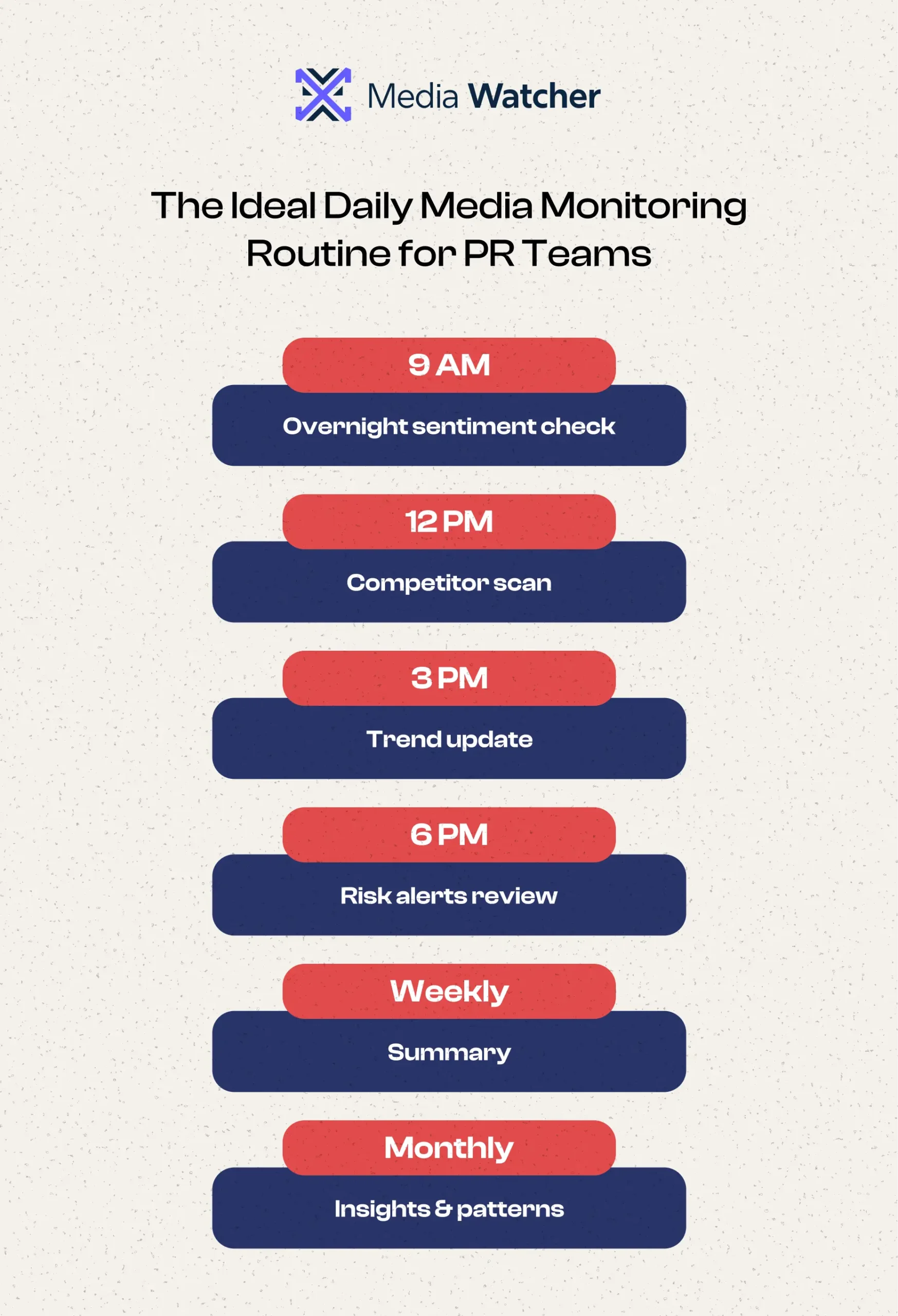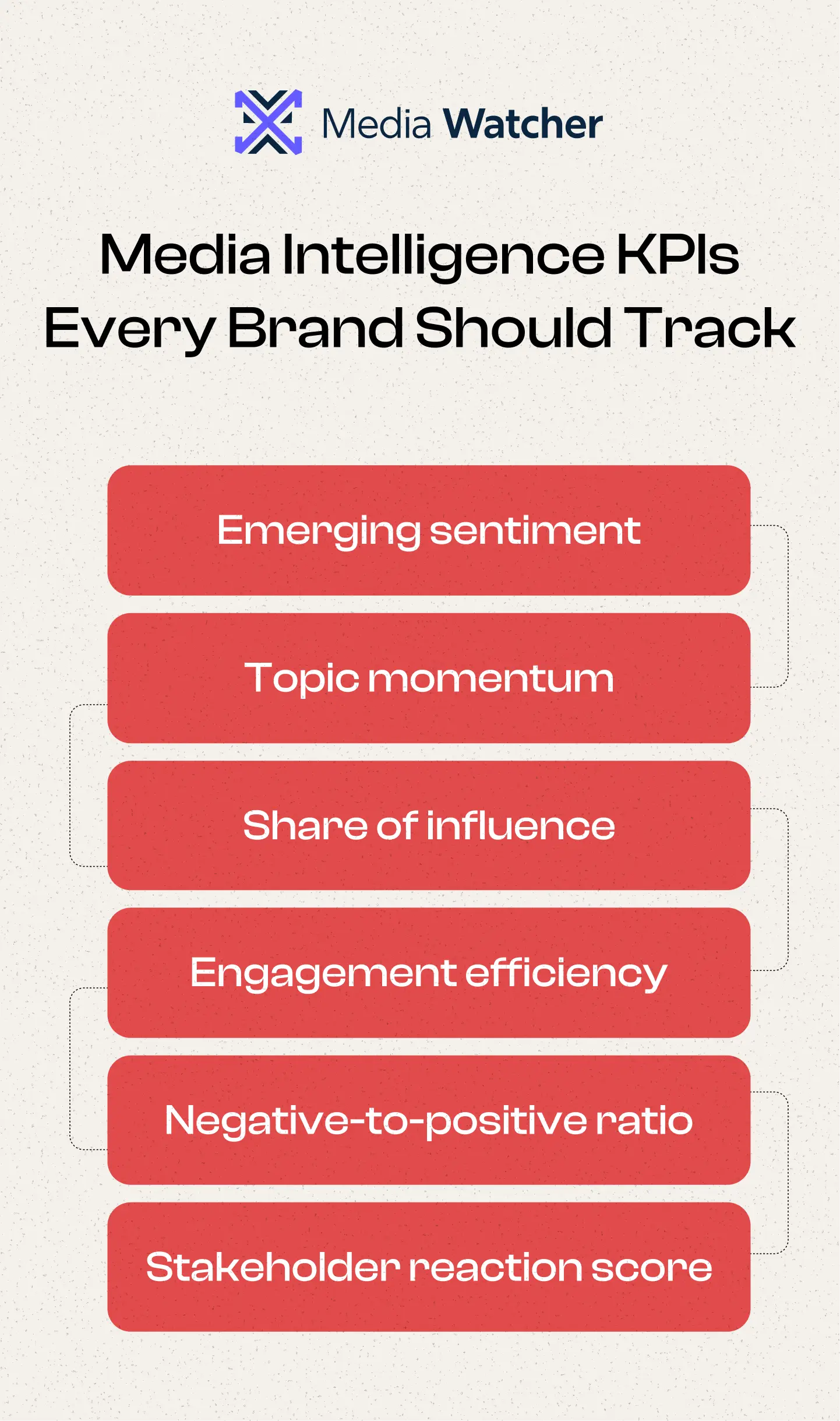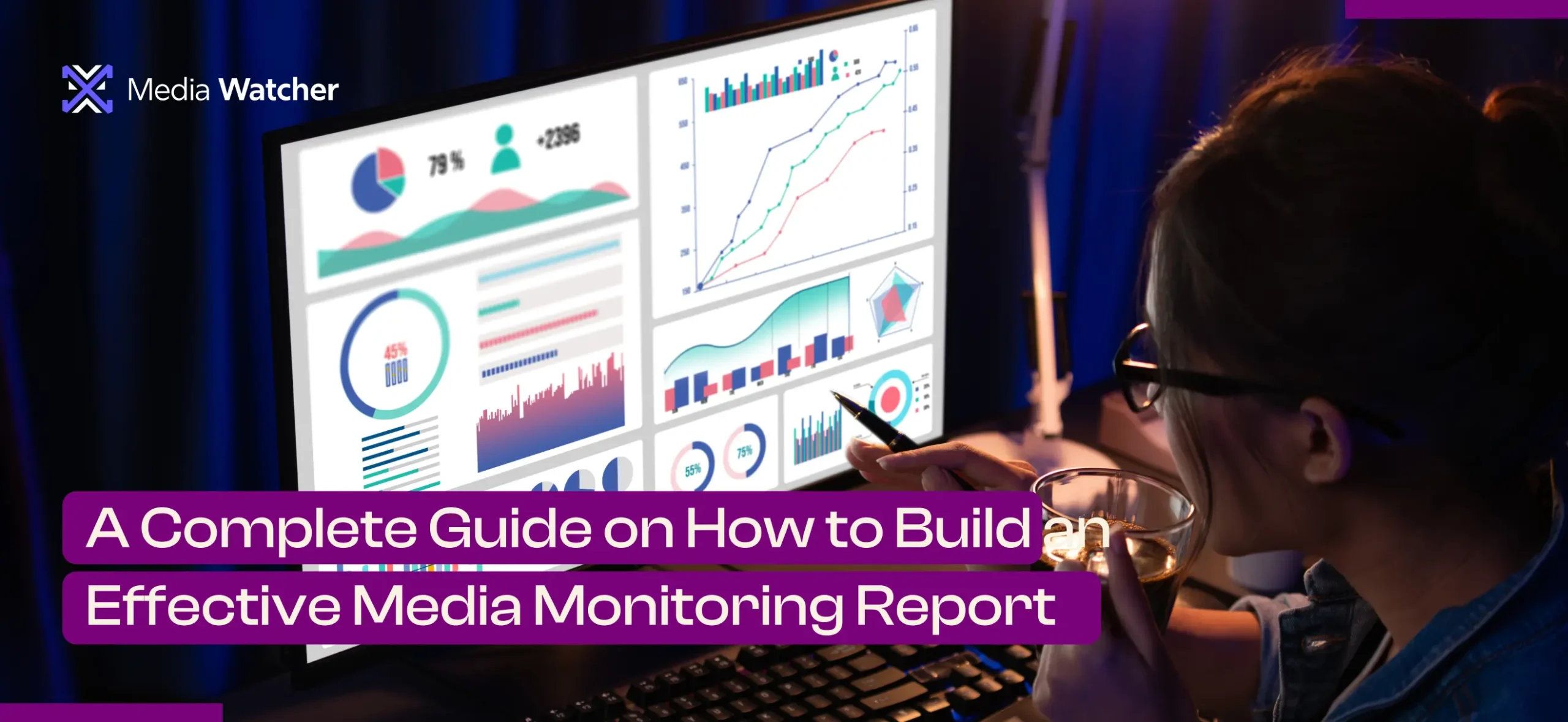Ever wondered what happens when billions of media mentions come under one roof?
A smarter media monitoring report makes those whispers, tweets, and headlines a great story regarding the impact of a brand. Be it the reaction of audiences to a campaign or the indicators of the impending PR crisis, media monitoring reports fill in the gap between raw data and actionable strategy. These mentions actually carry valuable customer feedback.
Research shows that organizations interpreting sentiment shifts and coverage reach can reduce reputational risks by up to 30%, proving that insight-driven action always outperforms guesswork.
The right media intelligence helps the brands move from reacting to leading the conversations, and hence gaining the strategic edge every time.
What is a Media Monitoring Report?
A media monitoring report is an important overview of the perceived presence of a brand, organization, or topic in the digital and traditional media. It collects the mentions in news articles, blogs, and social media, analyzing the tone, frequency, and reach to offer a clear picture of the popular opinion.
The report helps communications teams to evaluate the campaign effectiveness, the popularity of discussions, and the overall impact of media coverage. As an interface between data and decision-making, a media monitoring report transforms complex data into useful insights that help to build better brand strategies and reputation management.
Let’s see a media monitoring report example from the eye of the financial services industry, which is crucial in tracking the mood of the market and establishing the first indicators of investment trends. The report can be utilized by financial analysts and researchers to monitor the coverage of market events, policy changes, and company announcements by the major news media outlets and social media platforms.
The analyses based on this data assist professionals in evaluating public and investor confidence, identifying the possible risks, and predicting trading signals due to changes in sentiment. This type of analysis would provide a timely and informed decision-making within a sector where accuracy is the source of advantage.
What are the Major Types of Media Monitoring Reports?
Studies show that over 70% of PR professionals rely on structured media reports to measure the success of campaigns and manage brand reputation effectively. Every media monitoring report PDF tells a story about how audiences perceive, discuss, and interact with a brand across multiple channels.
Each type provides a different layer of insight from tracking immediate public reactions to evaluating long-term communication outcomes. Given below are some of the major types of media monitoring reports that describe insights with their own expertise:
1. Real-Time Media Monitoring Reports
Breaking stories, social mentions, and media coverage are captured as they occur through real-time reports. Such reports can also come in handy when it comes to product launches, policy releases, or emergencies where each and every second counts.
They enable communication teams to gauge sentiment changes, identify misinformation, and respond promptly before the story gets out of hand. Real-time management converts reactionary measures to proactive management of reputation.
2. Daily and Weekly Summaries Reports
Summary reports combine the necessary metrics, such as reach, engagement, and sentiment, within a certain time interval, on a daily, weekly, or monthly basis.
They assist teams to go beyond superficial data by finding patterns of performance and common themes. These insights enable decision-makers to assess campaign consistency and media traction without being bombarded by frequent updates.
3. Crisis Monitoring Reports
Crisis reports revolve around negative sentiment, spikes in mentions, or controversy-related conversations. They identify the sources of emerging problems, the media houses that are blowing them out of proportion, and the reactions of the people.
Analysis of such reports in a timely manner during PR crises can save the credibility of a brand and can also assist in communicating with stakeholders more efficiently.
4. Social Media Monitoring Report
Social media coverage goes into the rabbit hole of online debates, trends, and influencer actions. Such reports reveal the sentiment of the audience, trending topics, and viral moments that characterize social perception.
These insights are commonly utilized by brands to modify content approaches, enhance engagement, and become even closer to customers on social networks such as X (formerly Twitter), LinkedIn, and Instagram.
5. Competitor Benchmarking Reports
Benchmarking reports analyze the performance of the media presence of a brand against competitors. They examine visibility, sentiment, and share of voice to determine market positioning and growth opportunities.
Such a form of media monitoring report strengthens marketing and PR teams to be ahead of trends in the industry and adjust strategies to enhance brand authority.
What Should an Effective Media Monitoring Report Template Include?
A proper media monitoring report template will turn a pile of unorganized data into actionable knowledge. It must provide a clear visualization of how viewers engage with a brand on news, blogs, and social sites.
The study indicates that the brand-management division captured 38% of the worldwide media monitoring instruments market in 2024, demonstrating the centrality of monitoring to brand approach.
Given below are the following approaches that should be included in an effective media monitoring report:
- The report template is set to emphasize key metrics, such as media mention, reach, sentiment, and engagement trends. These factors give PR and marketing departments an estimable view of campaign outcomes and how narratives evolve over time. Complex information can be easier to interpret and communicate through reports that have visual charts and sentiment breakdowns.
- Strong templates also classify coverage by type of media, location, and credibility of source. This segmentation aids organizations to realise which channels are the most influential and those that need strategic consideration. Better relationship-building and smarter targeting may be the result of finding high-value media sources.
- Another essential feature of a media monitoring report template is competitor insights. Comparative data assists brands in benchmarking performance, gauging share of voice, and recognizing areas where competitors are performing better. The transparency of this allows for more informed strategy formulation and communication planning.
- An effective report is more than a number; it is a story. Successful templates combine data with minimal analysis and recommendations, directing teams in smarter decisions. These reports can be a great storytelling tool when done properly, converting media activity into a significant business result.
How to Prepare a Comprehensive Media Monitoring Analysis Report?
The right media monitoring analysis report will be a strategic focus, determining the actual response of the audience and the campaign performance on various platforms. Considerable detail will be useful for identifying which media outlets reinforce positive stories and which incite negative emotion; this way, the brands will be in a position to refine their communication strategy to a greater degree.
1. Define Clear Objectives
The purpose of any media monitoring analysis report starts with a goal, be it a measurement of brand sentiment, campaign performance, or media reach.
Establishing specific goals will guarantee that the report provides information that is relevant to the organizational priorities and decision-making requirements.
2. Collect Information from a Variety of Channels
Detailed reporting relies on broad data coverage. Industry research findings show that brands that monitor mentions in news, blogs, TV, radio, and social media are 35% more accurate in sentiment analysis, providing a 360-degree view of their image in the media.
3. Filter and Categorize Mentions
Out-of-place remarks water down the sense. Topical, geographical, and media type categorizing data reduces the accuracy and identifies where discussions are most valuable, allowing teams to prioritize the areas where platforms help the brand perception develop more effectively.
4. Analyze Metrics that Matter
Powerful reports explore practical metrics, including share of voice, sentiment trend, engagement rate, and potential reach. The visuals supported by data storytelling, such as charts or graphs, enhance comprehension and persuade stakeholders more about the insights.
5. Include Competitive Intelligence
Competitor benchmarking adds context to a media monitoring analysis report. The comparison of visibility, sentiment, and engagement levels indicates the industry position and shows the areas to be strategically enhanced.
6. Conclude Insights with Recommendations
Reports that end with major conclusions and actions are outstanding. Action-based summaries optimize data gathered by converting it into a roadmap and direct communication teams to more informed PR practices and brand reputation management.

How Media Monitoring Analysis Reports Help You Understand Brand Impact?
A detailed media monitoring analysis report reveals how every mention, article, or post contributes to overall brand impact. These reports do not stop at the number of mentions but evaluate the depth of sentiment, the accuracy of the message, and the impact of media with the aim of revealing the compatibility of the public narratives and brand values. A detailed media monitoring analysis report reveals how every mention, article or post contributes to overall brand impact. These reports do not stop at the number of mentions but evaluate the depth of
Studies indicate that brands that adopt media analytics achieve a 25% higher rate of responding to reputation threats because the insights provide a clue on when perception is altered. An understanding of impact by determining levels of visibility, audience interest, and media outlet tone provides the organization with the ability to modify communication messages before opinions take root, enabling the brand presence to remain both genuine and persuasive.

How Media Watcher Helps You Make Better Brand Decisions with Media Monitoring Reports?
Media Watcher turns media noise into meaningful insights that guide smarter brand decisions. Its media monitoring reports unite live analytics, sentiment analysis, and competitive analysis to assist enterprises in knowing where they stand with society.
Reliable data and AI-driven analysis make sure that communication plans remain compliant with the audience expectations and market forces. That’s how Media Watcher can make it happen:
- Brand name mentions in online, print, and broadcast media, and full access to public discourses.
- Sentiment analysis between languages in order to find out the emotional sentiment of the news and social discussions.
- Carries out share-of-voice comparison and competitor benchmarking to determine opportunities and strengths.
- Generates visual and data-driven reports that turn metrics into recommendations that can be implemented by communication and PR staff.
Contact the Media Watcher team and book a free demo today!




